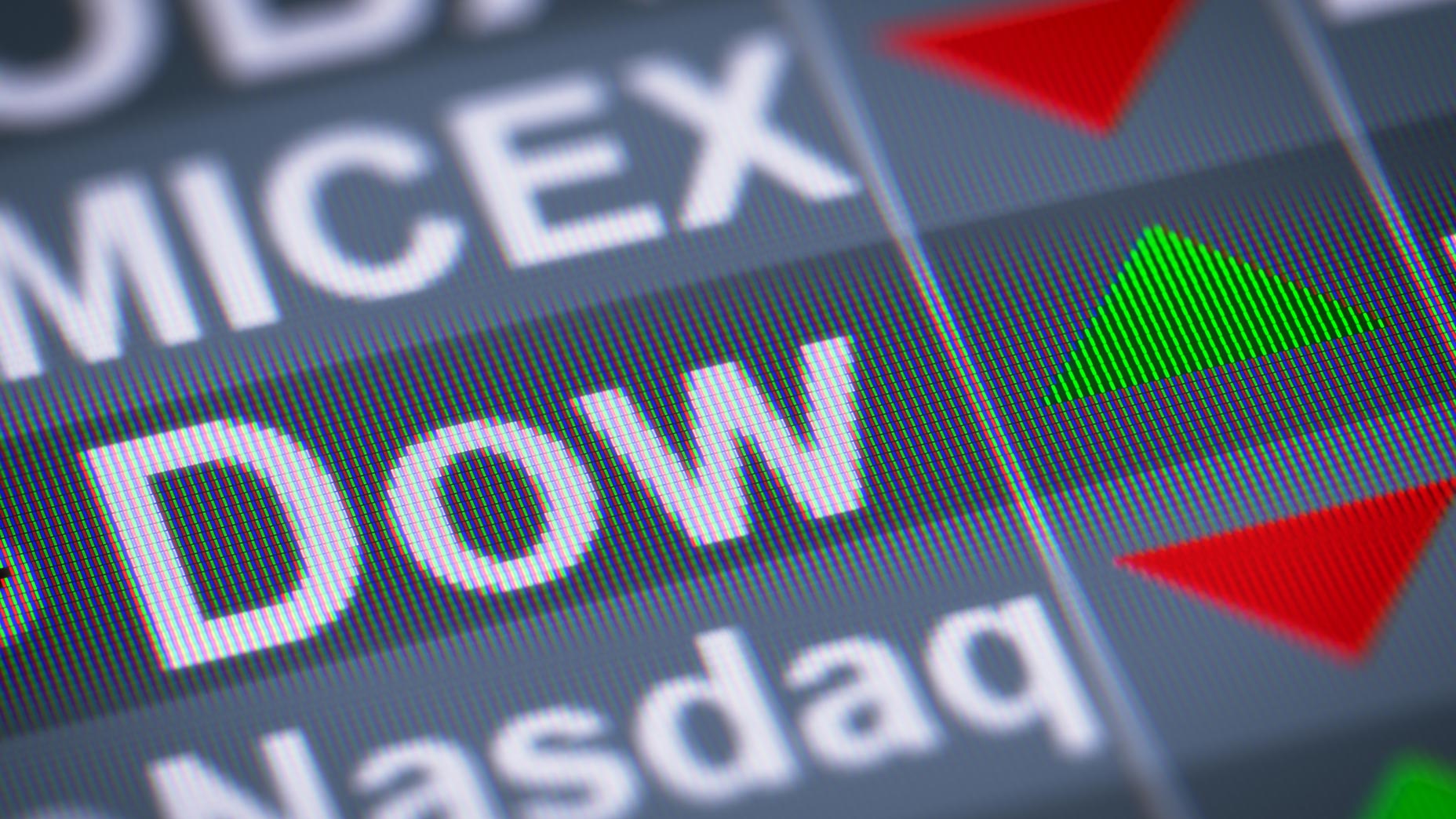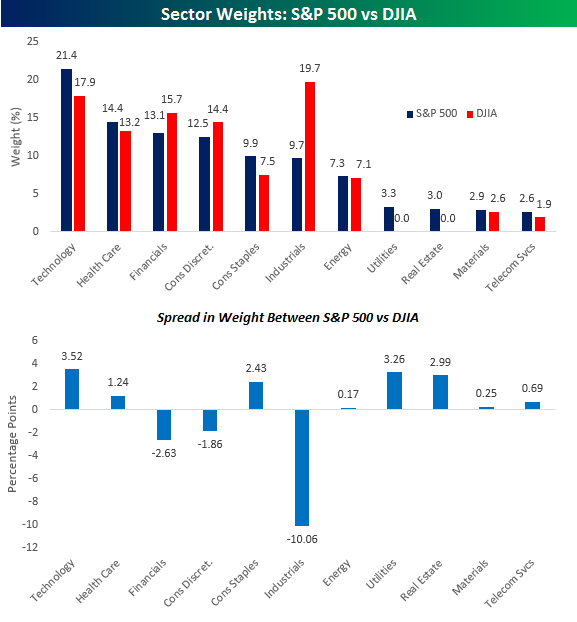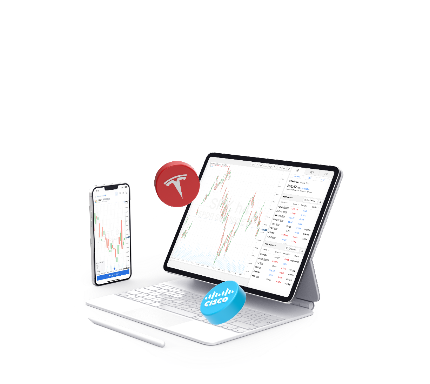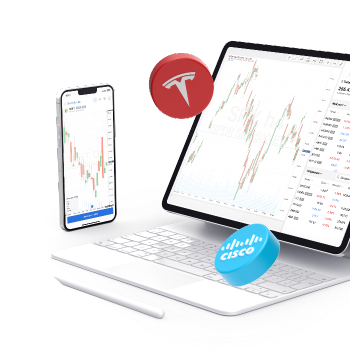2024 Dow Jones Index Forecast: Unveiling the Potential for Record Highs & Investment Insights

9 minutes for reading
On 27 December 2023, we examined the famous Dow Jones stock index, exploring the factors influencing its dynamics and assessing the scale of its growth in 2023. We performed a technical analysis of the Dow Jones chart and reviewed analysts’ forecasts regarding its prospects for quotes in 2024.
You can visit the RoboForex Market Analysis webpage for the latest Indices forecasts.
Comprehensive overview of the Dow Jones index
The Dow Jones Industrial Average Index (DJIA, US 30) is one of the leading and oldest stock indices in the US. It was created in 1896 by journalist and Wall Street Journal editor Charles Dow and his business partner Edward Jones.
The Dow Jones index tracks the stock dynamics of the 30 largest US companies regarding market capitalisation. Furthermore, these enterprises exhibit high stock values and high levels of trustworthiness. To be included in the DJIA list, a company must conduct a significant portion of its economic activity in the US, and its shares must be traded on the NASDAQ or NYSE. The index’s composition is periodically reviewed and approved by a special committee.
In-depth analysis: top 7 influential shares in the Dow Jones
To determine the value of the Dow Jones Industrial Average Index, a price-weighted average calculation is employed, utilising the Dow adjustment factor. This method assigns more weight to companies with high stock prices, giving their stock value changes more influence on the prevailing index quotes. According to Slickcharts data as of 22 December 2023, the top seven weight leaders in the index are:
| No | Company | Index Weighting | Price in USD |
| 1 | Unitedhealth Group Inc. (NYSE: UNH) | 9.17% | 520.40 |
| 2 | Goldman Sachs Group Inc. (NYSE: GS) | 6.70% | 381.34 |
| 3 | Microsoft Corporation (NASDAQ: MSFT) | 6.60% | 374.71 |
| 4 | Home Depot Inc. (NYSE: HD) | 6.14% | 349.45 |
| 5 | McDonald’s Corporation (NYSE: MCD) | 5.14% | 293.00 |
| 6 | Caterpillar Inc. (NYSE: CAT) | 5.11% | 295.60 |
| 7 | Amgen Inc. (NASDAQ: AMGN) | 5.00% | 282.42 |
Sector breakdown: understanding Dow Jones’ company distribution
- Technology – 17.9%
- Healthcare – 13.2%
- Financials – 15.7%
- Consumer Discretionary – 14.4%
- Consumer Staples – 7.5%
- Industrials – 19.7%
- Energy – 7.1%
- Basic Materials – 2.6%
- Telecommunications – 1.9%

2023: a retrospective look at the Dow Jones index
In 2023, the Dow Jones Average Index demonstrated impressive growth: at the beginning of the year, the quotes crossed the 33,150-point mark and reached 37,641 points on 22 December. Notably, the previous high set on 5 January 2022 stood at 36,953 points.
Stability in the US economy, the Federal Reserve’s success in controlling back inflation, and the expected interest rate decrease helped investors overcome their fears of a possible recession, enabling them to continue investing in shares of leading companies. The primary question now is whether this robust stock market rally will persist in 2024.
Growth of the Dow Jones index in 2020 - 2023*
Economic indicators shaping the Dow Jones
- The Fed’s monetary policy. Changes in the interest rate can influence companies’ expenditures and their approach to borrowing, subsequently impacting index quotes
- Global economic growth. Sustained growth in the world economy typically boosts manufacturing and consumption, positively affecting the profits and stock prices of companies listed in the index
- US economic indicators. An increase in significant US economic indicators such as the GDP, the unemployment rate, industrial production output, and retail sales positively influences the US 30 index
- Financial reports of companies. Robust quarterly and yearly results for Dow Jones companies can drive up their stock prices, creating favourable conditions for index growth
- Important domestic events. For instance, tax reforms or regulatory changes can significantly impact the stock market and, consequently, the index
- Global geopolitical events. For example, military conflicts can lead to the rupture of trade agreements and disruption of supply chains, causing increased uncertainty and volatility in financial markets
- Commodity prices. This typically concerns the index corporations, the share values of which depend on commodity prices
- Market sentiment and investor behaviour. Speculative activity, for example, can strongly influence the dynamics of index quotes
Technical deep dive: Dow Jones index analysis
Following a downward correction in 2022, Dow Jones quotes experienced a steady uptrend in 2023. Having started the year around 33,150 points, in December, the index surpassed the historical maximum of 36,953 points recorded in 2022. Supported by the Alligator and SMA (200) indicators, strong upward momentum persists at the time of writing, emphasising uptrend stability.
After hitting a new all-time high, the quotes hover at 37,545 points. The previous maximum value of 36,953 points currently acts as a support level. The price will likely undergo a slight correction and test this level in the short run.
If the index quotes fail to break it, an upward rally may continue, with the price occasionally reaching new all-time highs. Should the quotes consolidate below this level, a deeper downward correction will likely follow, targeting a support level of 35,680 points.
Technical Analysis of Dow Jones
Looking ahead: Dow Jones predictions for 2024
- According to LeoProphet forecasts, the Dow Jones will rise to 38,777 points in 2024
- Wallet Investor predicts index quotes to stand at 37,861 points in December 2024
- Analysts at the Economy Forecast Agency (EFA) suggest that a global fall in inflation will allow central banks to lower interest rates, thereby propelling the Dow Jones to a record level of 46,594 points by the end of 2024
How to invest in the Dow Jones
The US 30 index can be used for both short-term trading and long-term investing. Buying or selling the index directly is impossible since this is just a calculated value. Therefore, various financial instruments such as stocks, futures, options, CFD contracts, and ETFs are used for trading. Fundamental and technical analyses and indicator strategies can be used for research and decision-making.
One of the most popular investment vehicles is the purchase of an ETF (exchange-traded fund). Building a portfolio comprising all index stocks can be expensive. Consequently, various ETFs have been created to make investing affordable, including DJIA stocks at the right percentage correlation. Investors can buy the fund’s shares and generate income from potential stock growth and dividend payouts. One of the most popular ETFs for the Dow Jones is the SPDR Dow Jones Industrial Average ETF Trust (DIA).
Assessing the risks: a cautionary note on Dow Jones investments
Despite the stock indices commonly showing a positive trend in long-term investing, investments in the Dow Jones carry certain risks. For example, an economic downturn followed by a long-lasting, deep recession can send down stock prices and the index for a long time.
Specifically, the 2008 financial crisis in the US, caused by a housing bubble, triggered an index decline of about 50% from its maximum values seen in 2007. It took the Dow Jones five years to retrace to its highs and continue rising.
Conclusion
The Dow Jones Industrial Average (US 30) is one of the world’s most widely used stock indices, ranking among the top three most popular US indices. Its basket includes stocks of the 30 US largest companies by market capitalisation, all traded on US stock exchanges. This index is considered a crucial indicator of the country’s economic well-being.
In 2023, the index demonstrated a confident upward rally, updating the historical maximum set in 2022. Stock market experts are moderately optimistic, anticipating continued growth in 2024 amid expectations for a reduction in the interest rates by the US Federal Reserve. The most optimistic forecasts predict growth of around 46,000 points. However, the risks of a potential slowdown in the US economy may impede the realisation of these forecasts.
FAQ
What is the Dow Jones Industrial Average (DJIA)?
The Dow Jones Industrial Average (DJIA) is a stock market index that measures the stock performance of 30 large, publicly owned companies listed on stock exchanges in the US. It is one of the oldest and most commonly followed equity indices, often used as a barometer for the overall health of the US stock market and economy.
How is the DJIA calculated?
The DJIA is a price-weighted index, meaning that companies with higher stock prices significantly impact the index’s value. Its value is calculated by adding the prices of all 30 stocks and dividing this total by a divisor, which is adjusted to account for stock splits, dividends, and other factors.
What factors typically influence the DJIA’s performance?
A range of factors can influence the DJIA’s performance, including economic indicators (like GDP growth rates, unemployment figures, and interest rate changes), corporate earnings reports, geopolitical events, and global market trends. Investor sentiment and market speculation also play significant roles.
How can individual investors invest in the Dow Jones?
Individual investors can invest in the Dow Jones by purchasing shares of mutual funds or exchange-traded funds (ETFs) that track the performance of the DJIA. Alternatively, investors can buy shares in the individual companies that make up the DJIA or buy a Contract for Difference based on DJIA, like US 30 Index Cash.
What are the common risks associated with investing in the DJIA?
Common risks include market risk (the possibility of the entire market declining), sector-specific risks (if particular industries within the DJIA perform poorly), and individual company risk. Economic downturns and geopolitical events can also negatively affect the DJIA.
Can the DJIA be used as an indicator of the overall economy?
Yes, the DJIA is often viewed as an indicator of the economic health of American companies’ industrial sector. While it does not represent the entire economy, trends in the DJIA can reflect investor confidence and economic conditions.
Are there any upcoming economic events that could significantly impact the DJIA in 2024?
Key events to watch include decisions by the Federal Reserve on interest rates, ongoing trade negotiations, geopolitical developments, and major corporate earnings reports. The outcome of these events can significantly impact investor sentiment and the performance of the DJIA.
What resources are available for staying updated on the DJIA’s performance?
Investors can follow DJIA updates through financial news websites, stock market apps, financial news channels, and investment platforms. Regularly reading market analyses and reports from financial experts can also provide valuable insights.
* – The charts showcased in this article come from the TradingView platform, widely recognized for its comprehensive suite of tools crafted for analyzing financial markets. Serving as an advanced and user-friendly online service for charting market data, TradingView empowers users to conduct technical analysis, delve into financial data, and connect with fellow traders and investors. Additionally, it imparts valuable guidance on adeptly comprehending how to read forex economic calendar, along with offering insights into various other financial assets.











